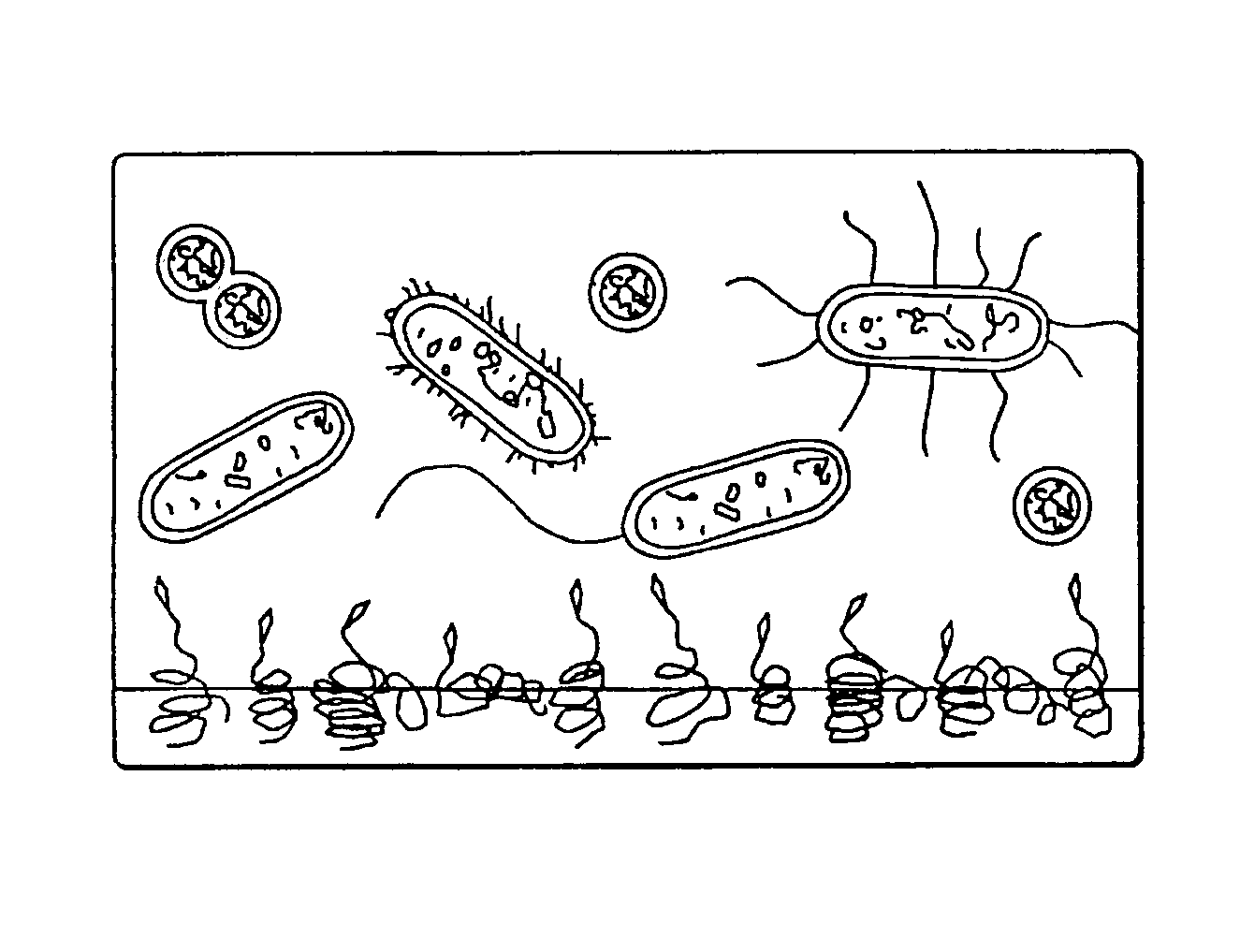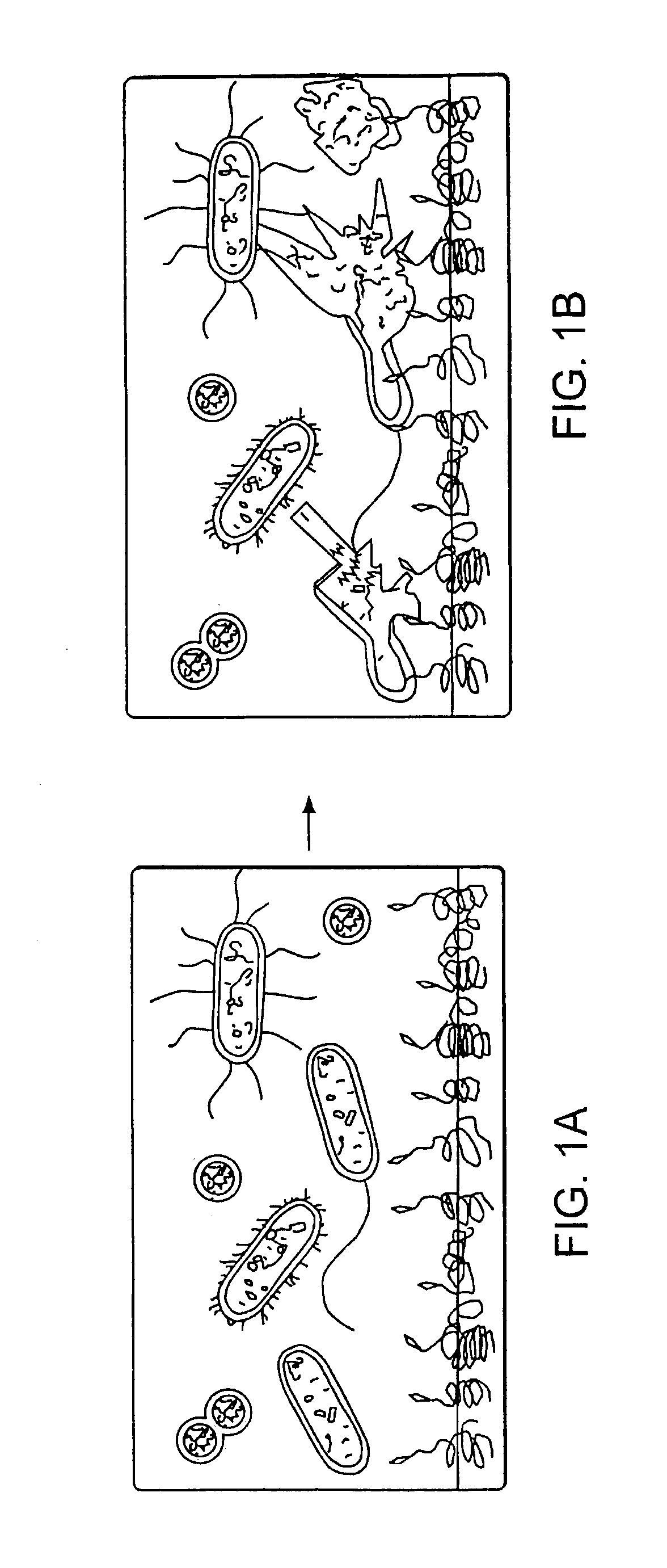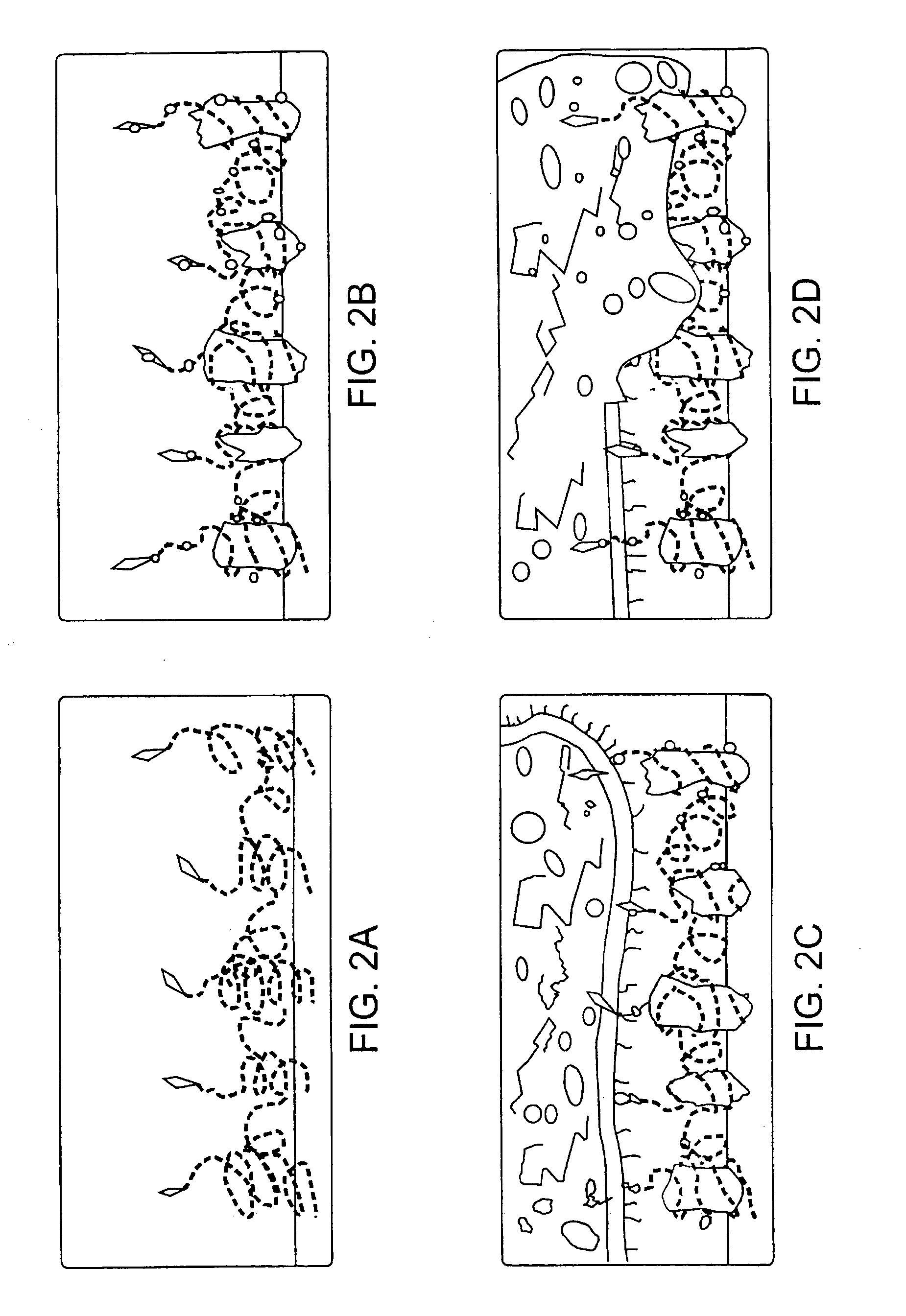Contact-killing antimicrobial devices
- Summary
- Abstract
- Description
- Claims
- Application Information
AI Technical Summary
Benefits of technology
Problems solved by technology
Method used
Image
Examples
example 1
Preparation of PHMB-BMDGA Solutions
[0073]Polyhexamethylene biguanide (PHMB) (available as a 20% aqueous solution from Zeneca Biocides, Wilmington, Del.) was distilled to remove the water, and the PHMB was re-dissolved in absolute ethanol to give a 20% by weight solution. This solution was used to prepare the resins outlined below.
[0074](a) 312 mL of the 20% PHMB solution in ethanol was further diluted with 600 ml of ethanol. This solution was added to a solution of N,N-bismethylene diglycidylaniline) (BMDGA) (Aldrich Chemical Company, Milwaukee, Wis.) containing 37.60 grams of BMDGA dissolved in 119.9 ml of acetonitrile and 280.1 ml of ethanol. The resulting mixture was heated at 95° C. in a closed reactor for two hours, forming a PHMB-BMDGA adduct. The adduct solution was cooled and filtered (Scientific Grade 417 filter). The resulting adduct solution contained 10% by weight of PHMB:BMDGA adduct having a PHMB:BMDGA ratio of 1.5:1.
(b) 330 μL of the 20% PHMB. This solution was combin...
example 2
Coating of Plastic Articles
[0080]Various plastic articles were coated using the coating solutions described in Example 1.[0081]1. contact lens cases: polyethylene and polypropylene contact lens cases were coated according to the following procedure:
[0082]The contact lens cases were cleaned by immersing them in absolute ethanol for 5 minutes and dried. The cleaned cases were immersed in the antimicrobial coating solution (Example 1a or 1b) for 1 to 2 minutes. The sample cases were dried by hot air blowing. Crosslinking was induced by heating the cases at 120° C. for the polyethylene cases and at 200° C. for the polypropylene cases for 2 hours. The cases were allowed to cool, rinsed with 60° C. water to remove any unbound polymer, then dried at 60° C. for 1-3 hours.
[0083]The coated cases were immersed in a 0.05% solution of silver iodide / potassium iodide in alcohol for 2 minutes. The cases were rinsed with aqueous alcohol to remove any unbound silver. The cases then were rinsed with w...
example 3
Membrane Coating Procedure
[0090]Polyethersulfone and nylon membranes were cleaned as described in Example 2 above. The membranes were coated with the antimicrobial resin solution described in Example 1 (1a or 1b) and dried. The coatings then were crosslinked by heating at 120° C. The resulting crosslinked coatings were rinsed with water to remove any unbound polymer, were rinsed with acidified water or buffer [pH2-2.5], followed by another water rinse, then dried. Silver was deposited into the crosslinked polymer matrix by immersing the coated membrane in a 0.05% solution of a silver iodide / potassium iodide complex in aqueous alcohol.
[0091]Unbound silver iodide was removed by an ethanol wash. The membrane was rinsed with water, then dried at 70° C. for 30 minutes.
PUM
| Property | Measurement | Unit |
|---|---|---|
| Time | aaaaa | aaaaa |
| Fraction | aaaaa | aaaaa |
| Fraction | aaaaa | aaaaa |
Abstract
Description
Claims
Application Information
 Login to View More
Login to View More - R&D
- Intellectual Property
- Life Sciences
- Materials
- Tech Scout
- Unparalleled Data Quality
- Higher Quality Content
- 60% Fewer Hallucinations
Browse by: Latest US Patents, China's latest patents, Technical Efficacy Thesaurus, Application Domain, Technology Topic, Popular Technical Reports.
© 2025 PatSnap. All rights reserved.Legal|Privacy policy|Modern Slavery Act Transparency Statement|Sitemap|About US| Contact US: help@patsnap.com



